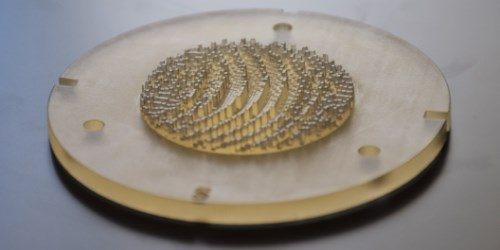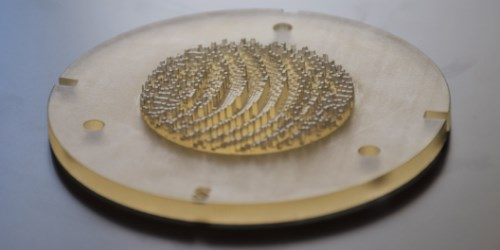Focusing Ultrasound with Holographic Lenses
Targeting the brain with focused ultrasound could enhance drug therapies by temporarily opening the blood-brain barrier. It could also be a way to modulate brain activity noninvasively, potentially treating pathologies of the central nervous system such as Parkinson’s disease. Both of these applications require ultrasound energy to be focused precisely onto targeted brain structures, but this is made difficult by the distortion produced by the skull. Addressing this challenge, Sergio Jiménez-Gambín and colleagues at the Technical University of Valencia in Spain devised a 3D-printed acoustic lens that compensates for the aberration by shaping an ultrasound beam before it reaches the head.
The team created a computer model that included the detailed anatomy of the brain and the shape and acoustic properties of the skull. They then attacked the problem in the reverse time direction by simulating ultrasound sources inside the brain and calculating the lens designs that would turn the disordered phase of the exiting sound waves into coherent beams. In the forward time direction, the same lenses constitute acoustic holograms, distorting incoming planar beams by the necessary amount to produce the desired sound “image” inside the brain.
To test the method, Jiménez-Gambín and colleagues used their simulations to 3D print plastic lenses with textured surfaces made from stacks of little columns. The team directed an ultrasound beam through each lens and measured the resulting sound field inside a phantom, or model head, whose skull shape matched their computer model. In a clinical setting, the technique could be used to create lenses quickly and cheaply for individual patients. Doctors would first characterize a person’s skull shape with CT and MRI scans and then 3D print the acoustic lens that yields the required ultrasound distribution.
This research is published in Physical Review Applied.
–Marric Stephens
Marric Stephens is a freelance science writer based in Bristol, UK.





